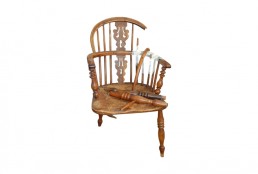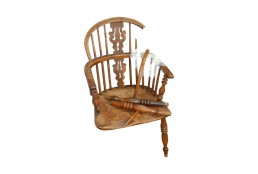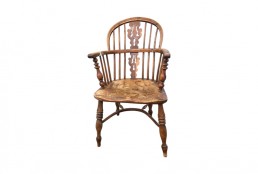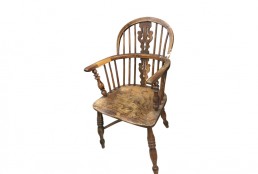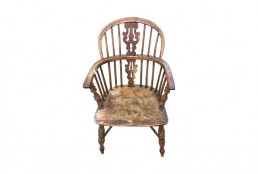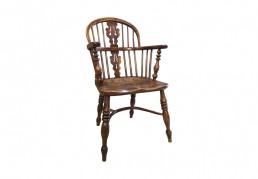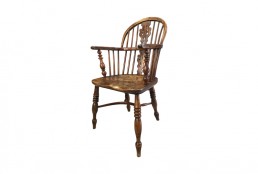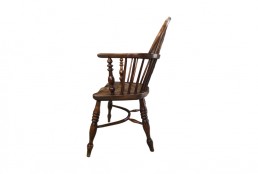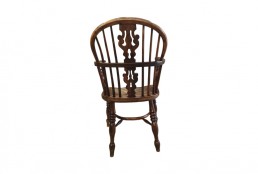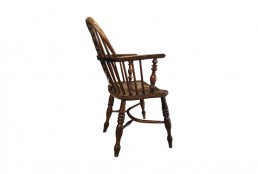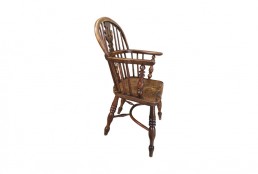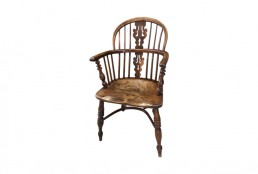The client had been carrying the chair down a flight of stairs when he lost balance and fell and landed onto the chair. The chair had great sentimental value to the family and the task was to rebuild it with as much conservation of the existing as possible. The right arm had been almost completely destroyed with a lot of the timber splintering. The legs had become detached and sheared off at the top where they were dowelled into the underneath of the seat. The curved stretcher had snapped in two places. The spindles in the back were also broken and sections were missing. The task was therefore to reconstruct the chair with the minimum of intervention and to leave it looking with a well maintained antique finish. The work was both difficult and extensive but the final result was met with both undulation and great appreciation. The client was also interested in the history of the chair as they had no idea of it’s age or provenance. I carried out investigations which led me to establish that the chair was probably made around 1840 by George Nicolson. They asked if this could be presented in a frame with all the details under a heading of ‘This Chair’. My wife, who is a professional picture framer, had a pre-owned gilt frame that was ideal for the purpose. The text was as follows:-
“This Chair”
The Windsor chair can be easily identified as the back support and legs are separated by the thickness of the seat into which they are mortised. It was first recorded in 1724. The earliest form was the comb back. This is a ‘bow back’ and was developed once the principle of bending the arm bow was understood and came into use about 1740. It provided a studier back support than the original comb back and also reduced the amount of work finishing off the back of the chair.
This chair was probably made around 1840 by George Nicolson. A Methodist Minister, Nicholson took over the workshop of William Wheatland (also a minister and the founder of the Rockley tradition of chair making) in the tiny hamlet of Rockley in 1830, and produced furniture there until approximately 1841. The chair is Ash with Elm seat c.1840 with three spindles either side the of central pierced back splats, turned underarm supports, and turned single ring legs connected by crinoline stretcher.
Rockley, is a hamlet in Askham parish, Notts. It has a Wesleyan chapel.
My client wrote to say:-
I searched and contacted several restorers offering repair work and renovation. None offered skills required.
I then found Ian Wall, a member of BAFRA – the association promotes skilled craftsmen and women that have the skills in sympathetic renovation and restoration.
Without request, Ian took it upon himself to search the history of my chair.
Upon collection of my beautiful restored Windsor Chair.
As a member of the Guild of Craftsmen. Ian was able to identify the one single maker of my chair and it can be aged to between a 9 year period in the 19th Century.
Ian exceeded my expectations and more.
He is the Only craftsman I would recommend.
Thankyou again Ian
Stuart
Hampshire
22-12-19

